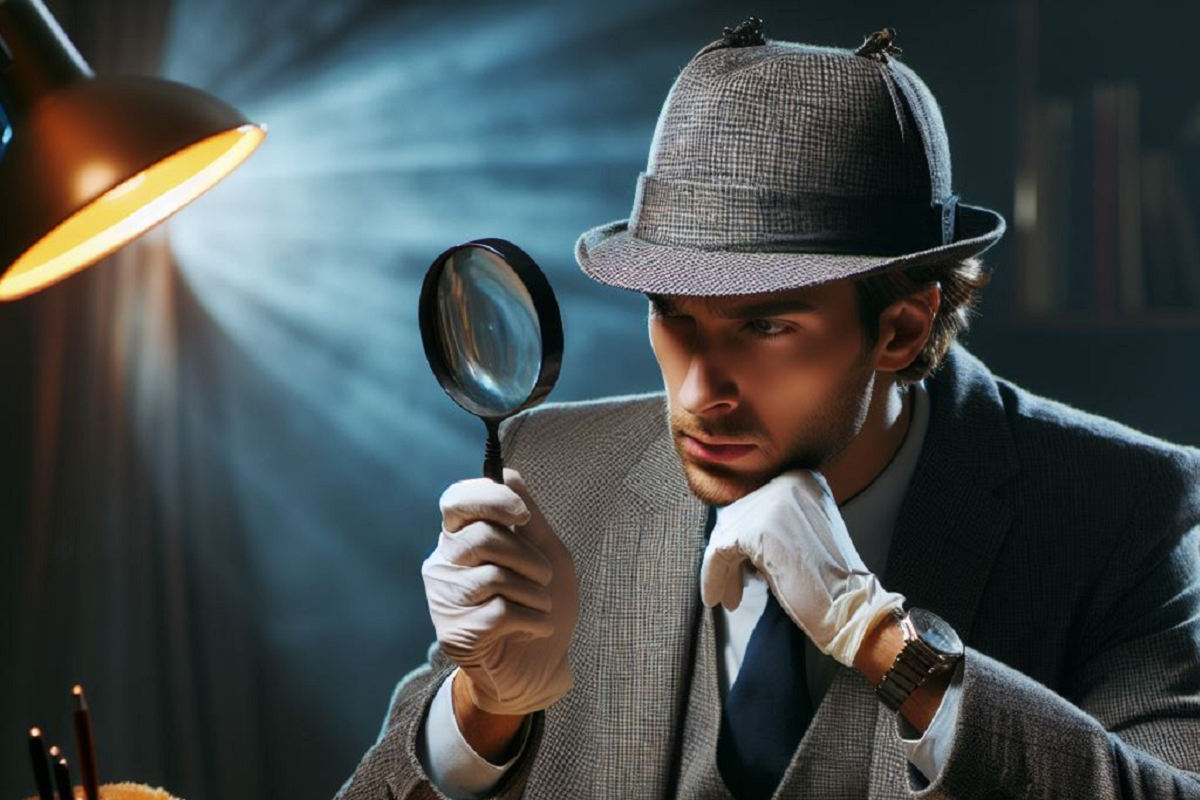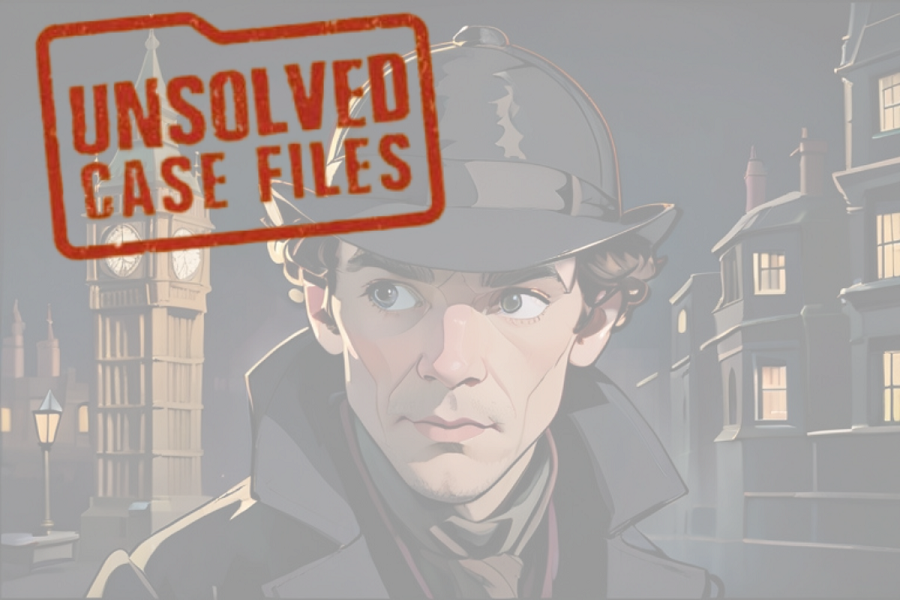Referring to the past, I can confidently say that Arthur Conan Doyle’s Sherlock Holmes is one of the fictional characters that people have been intrigued by for a long period. The stage of the late nineteenth century is when the Holmes stories were set, and they incorporated very realistic, yet complicated forensic approaches. Let us take a look at some of the techniques used in Sherlock Holmes’ investigation, the greatest detective, and how accurate they were.
How Accurate are the Forensic Techniques used in Sherlock Holmes Investigation?
Sir Arthur Conan Doyle’s Sherlock Holmes investigations told of a world where forensic techniques were breathtakingly advanced. Following is my take on their precision:
1. Fingerprint Analysis
Fingerprinting became appreciable in the 20th century and was not considered a reliable forensic tool prior.
Example: One usually does not hear of Holmes using fingerprint dust. But in his trademark stories, it is commonplace for him to lift fingerprints to use them to solve crimes.
2. Bloodstain Analysis
Bloodstain analysis or pattern examination is a science that has advanced in this century. It is reasonable to assume that bloodstain analysis carried out in the olden days was not as developed as in Holmes’ time.
Example: In A Study in Scarlet, Sherlock Holmes analyzes bloodstains in a crime scene. Later, he draws conclusions that require modern sophisticated bloodstain or blood spatter analysis, which are not available at that time.
3. Trace Evidence
Holmes was considered a pioneer in forensic science with his imaginative approaches to using trace evidence in forensics. Much of Holmes’s scanning processes, like analyzing hair fibers or dust particles, would have been impossible to achieve during his lifetime.
Example: In The Hound of the Baskervilles, Holmes gazed upon a hound and noticed its wonderful luminous markings. This remarkable aspect was important in identifying the culprit.
4. Handwriting Analysis
This form of personality analysis through handwriting is known as graphology. Though it gained prominence in the 19th century, it remains highly questionable. As with most graphologists, Holmes relied on handwriting as a critical tool to obtain clues. However, we now know that the use of such techniques would not be accepted in forensic science today.
Example: In The Adventure of the Reigate Squires, Holmes examines a threatening note and analyzes the handwriting. As he scrutinizes the note, he proposes that there were two people involved in writing the note because it appeared to be written by two different individuals. This clue helps Holmes identify the culprits.
5. Basic Toxicology
Even during the 19th century, there was an understanding of toxins and their effects. Of course, the modern approach is much more sophisticated. Every now and then, Holmes seemed to utilize this knowledge when he mentioned how some poisons could be diagnosed.
Example: In The Adventure of the Speckled Band, Holmes identifies signs of a snakebite from an unknown source of poison.
Recommended: What is the Significance of Sherlock Holmes’ Violin?
6. Footprint Analysis
Receiving a plaster cast of a person’s footstep was an established but rough form of identification during the 19th century. Even so, the degree of detail Holmes infers from foot patterns is impossible to have been achieved through such techniques.
Example: In The Adventure of the Baskerville Hound, Holmes looks at the prints left on the ground next to the murder scene and analyzes them. Sherlock Holmes uses the size and kind of animal who left the prints to be able to continue with his investigation.

7. Ballistics
Forensic study of weapons and bullets was still in its infancy towards the end of the 19th century. However, there must have been some analysis regarding the size of the bullet and the direction it traveled. The kind of thorough description provided in the stories cannot be done at that time.
Example: In The Adventure of the Dancing Men, Holmes detects a weak odor of gunpowder and therefore infers that Mr. Cubitt was shot from outside the house after the detective had entered.
8. Deductive Reasoning
His most celebrated technique rests on his ability to use deductive reasoning to arrive at logical conclusions based on unrelated facts. Constructing logical sequences from facts in the investigation is essential. At the same time, it should be noted that investigations are often a blend of deduction, proof gathering, and scientific reasoning in real life.
Example: In The Adventure of the Speckled Band, Holmes notices some wall markings that are discolored. He explains the underlying cause to be the existence of a concealed ventilation shaft, which is fundamental in the resolution of the case.
9. Dogs
Tracking and scent identification with the aid of dogs was a common phenomenon in the 19th century, particularly in Europe. Fitted with tracking collars, bloodhounds were placed on the trail of criminals and children who had been abducted. While Sherlock makes use of dogs for tracking, quite a number of stories also use hounds of low degree of intellect for a measure of amusing crudity.
Example: In The Hound of the Baskervilles, a bloodhound is employed by Holmes to track an escaped convict’s whereabouts on the moors.
10. Ciphers
Cryptography is the code or secret writing that has a completely long history. Substitution ciphers (where the letter is exchanged for other letters) were commonplace as far back as the 19th century. Real-life code-breaking is intricate and extremely detailed or specific, which requires specialization in certain ciphers coupled with the context of the surrounding text that is encrypted.
Example: In The Adventures of the Dancing Men, Holmes solves a set of messages that have been coded with a certain cryptographic method interlaced with reasoning based on liberal jargon.
Conclusion
Forensic approaches to crime proposed by Sherlock Holmes were and are largely fictitious. He gives food for thought about how a good and intricate scientific way becomes gradually more and more essential in the field of investigation. Along with this, it hints at the ever-green charm of a dubious character capable of uncovering enigmas by sheer reason and imagination.
Recommended: Frankenstein by Mary Shelley | Summary, Characters and Themes





This website online is known as a walk-via for all of the info you needed about this and didn抰 know who to ask. Glimpse here, and you抣l definitely discover it.
Hi Hottest Hairstyles,
Thank you for the kind words! I’m glad you found the website helpful. If you have any questions, feel free to ask anytime!
What’s Happening i’m new to this, I stumbled upon this I’ve found It absolutely helpful and it has aided me out loads I hope to contribute & assist different customers like its aided me Good job